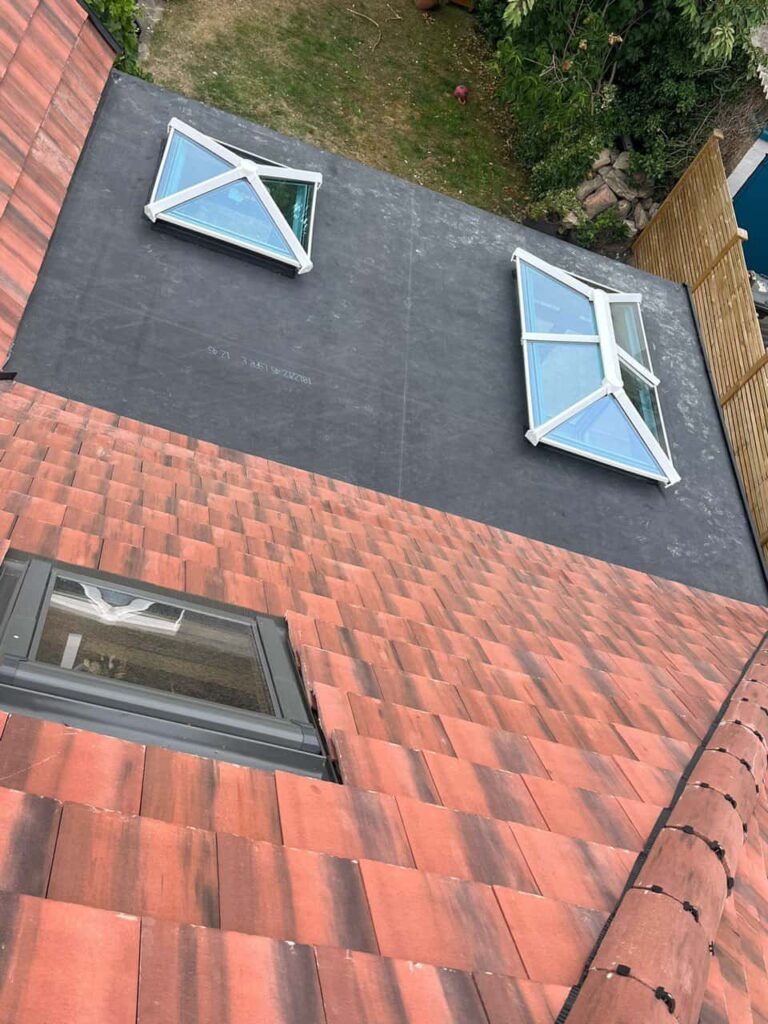Introduction
Your roof is quietly doing one of the most important jobs on your property—keeping your home protected from the elements. But despite its vital role, it’s often ignored until a problem becomes obvious. Regular roof checks aren’t just for old buildings or during emergencies; they’re a crucial part of property maintenance that can save you stress, damage, and money in the long run.
At Hedge End Roofing Repairs, we know that proactive inspections are far more effective than reactive repairs. Whether you’re living in a characterful cottage or a modern build in Hedge End, Hampshire, staying on top of your roof’s condition is a wise move. Let’s break down how often your roof should really be checked and what a professional inspection includes.
General Rule: Twice a Year
The industry recommendation is to have your roof professionally checked twice a year—once in the spring and again in the autumn. These seasons are ideal as they follow the more extreme weather of winter and summer, allowing time to assess any wear and prepare for the next change in climate.
Reasons for biannual checks:
- Catch damage from frost, snow, or storms
- Prepare the roof for wet winter months
- Remove moss, leaves, and debris after autumn
- Check for sun-related deterioration following hot summers
Even if there are no obvious signs of trouble, these routine inspections can highlight early-stage issues that could become costly if left unattended.
After Severe Weather Events
Hampshire may not be known for tropical storms, but the UK still experiences sudden high winds, heavy rain, and the occasional hailstorm. Any extreme weather event can compromise your roof—even in ways you can’t see from the ground.
When to schedule an extra check:
- After a storm with strong winds or flying debris
- Following prolonged periods of heavy rain
- If large branches fall near or onto your roof
- If tiles or guttering appear to have shifted or detached
Prompt post-storm inspections reduce the risk of leaks, internal damp, and further structural deterioration.
For Older Roofs: Increase the Frequency
If your roof is approaching the end of its expected lifespan (typically 20–50 years depending on materials), inspections should become more frequent—every 6 months or even quarterly. Older roofs are more vulnerable to deterioration and may require more regular maintenance to stay safe and functional.
Signs your roof is ageing:
- Moss or algae buildup
- Cracked or curling tiles
- Sagging or uneven rooflines
- Frequent leaks or watermarks inside the house
At Hedge End Roofing Repairs, we recommend a tailored inspection schedule for older properties, especially those with historical or specialist roofing materials.
What Happens During a Professional Roof Inspection?
A proper roof check is much more than a quick glance from the ground. Trained roofing professionals will examine your entire roof system, including key problem areas that homeowners may overlook.
A professional inspection usually includes:
- Checking for cracked or missing tiles
- Examining the flashing around chimneys, skylights, and vents
- Inspecting gutters and downpipes for blockages or wear
- Assessing roof structure for sagging or signs of movement
- Looking for signs of damp, mould, or internal leaks in loft spaces
A well-documented inspection gives you peace of mind and a clear plan for any necessary work—before it becomes urgent.
Benefits of Regular Roof Checks
Still on the fence about calling in the professionals? Here’s why regular roof inspections are more than just a ‘nice to have.’
The real-world benefits:
- Prevents small issues from turning into major repairs
- Extends the life of your roofing materials
- Maintains property value and kerb appeal
- Protects interiors from water damage and heat loss
- Supports overall home safety and structure
In short, checking your roof isn’t just maintenance—it’s a smart investment in your home’s future.
Common Misconceptions About Roof Inspections
Many homeowners delay roof inspections because they think everything is fine as long as there’s no visible leak. But not all roof issues show immediate signs.
Common myths:
- “I just had the roof done a few years ago.”
- “There’s no damp, so it must be fine.”
- “I’ll wait until something breaks.”
- “It’s only a few cracked tiles—it can wait.”
Unfortunately, by the time damage becomes visible, it often means it’s already been affecting your home for months.
Conclusion
How often should your roof be checked? The answer is simple: at least twice a year, and more frequently if your property is older or exposed to extreme weather. A roof may seem strong and reliable, but like any part of your home, it benefits from regular attention and timely care.
At Hedge End Roofing Repairs, we offer professional inspections tailored to your roof type, age, and condition. If you want to avoid unnecessary repair costs and extend the life of your roof, get in touch with our team today. Keeping a healthy roof over your head starts with one smart decision—booking that check-up.
Call us on: 01489 359 891
Click here to find out more about Hedge End Roofing Repairs
Click here to complete our contact form and see how we can help with your roofing needs.

